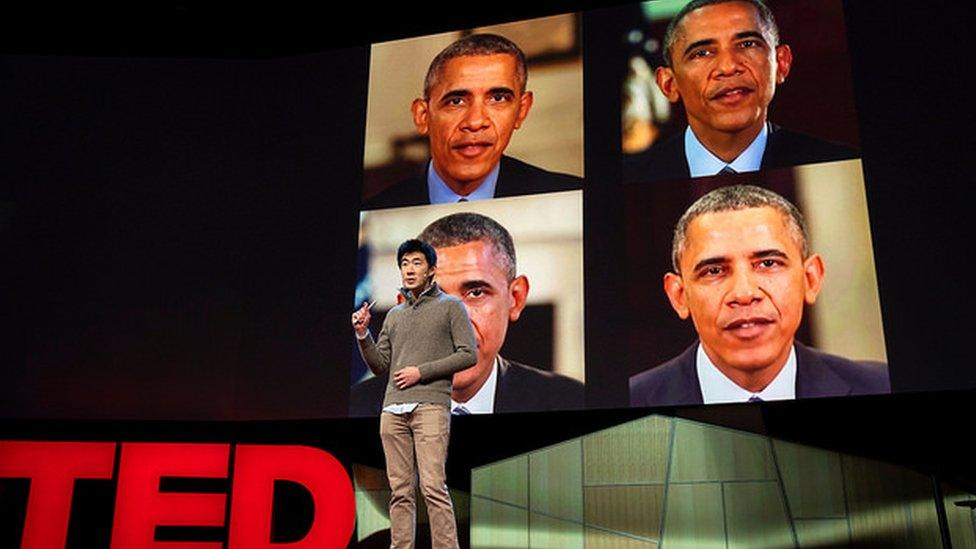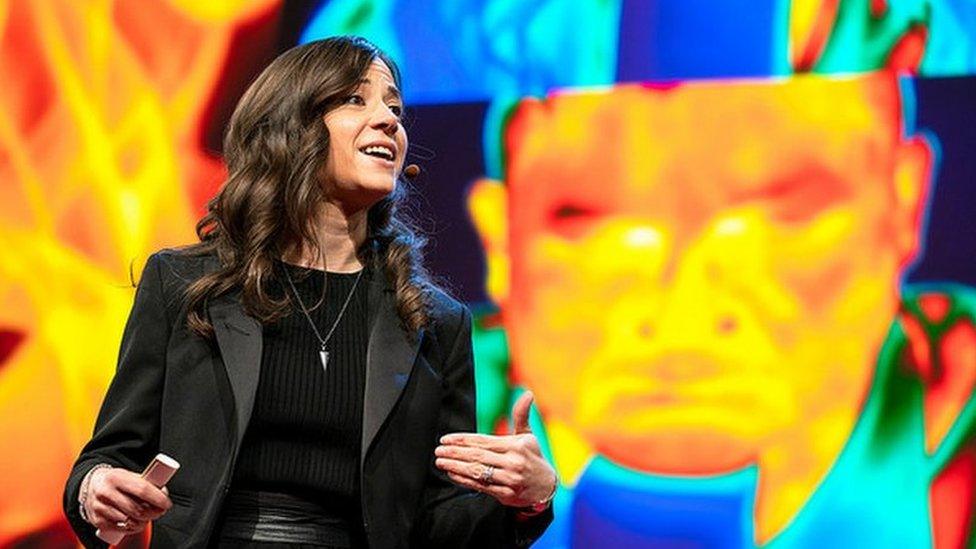TED 2018: Fake Obama video creator defends invention
- Published

None of these Obama videos is real said Supasorn Suwajanakorn
A researcher who created a fake video of President Obama has defended his invention at the latest TED talks.
The clip shows a computer-generated version of the former US leader mapped to fit an audio recording. Experts have warned the tech involved could spark a "political crisis".
Dr Supasorn Suwajanakorn acknowledged that there was a "potential for misuse".
But, at the Vancouver event, he added the tech could be a force for good.
The computer engineer is now employed by Google's Brain division. He is also working on a tool to detect fake videos and photos on behalf of the AI Foundation.
Damage risk
Dr Suwajanakorn, along with colleagues Steven Seitz and Ira Kemelmacher-Shlizerman from the University of Washington, released a paper, external in July 2017 describing how they created the fake Obama.
The tool can edit videos of people speaking and make them say something they have not
They developed an algorithm that took audio and transposed it on to a 3D model of the president's face.
The task was completed by a neural network, using 14 hours of Obama speeches and layering that data on top of a basic mouth shape.
Dr Suwajanakorn acknowledged that "fake videos can do a lot of damage" and needed an ethical framework.
"The reaction to our work was quite mixed. People, such as graphic designers, thought it was a great tool. But it was also very scary for other people," he told the BBC.
Political crisis
It could offer history students the chance to meet and interview Holocaust victims, he said. Another example would be to let people create avatars of dead relatives.
Experts remain concerned that the technology could create new types of propaganda and false reports.
"Fake news tends to spread faster than real news as it is both novel and confirms existing biases," said Dr Bernie Hogan, a senior research fellow at the Oxford Internet Institute.
"Seeing someone make fake news with real voices and faces, as seen in the recent issue about deepfakes, will likely lead to a political crisis with associated calls to regulate the technology."
Deepfakes refers to the recent controversy over an easy-to-use software tool that scans photographs and then uses them to substitute one person's features with another. It has been used to create hundreds of pornographic video clips featuring celebrities' faces.
Dr Suwajanakorn said that while fake videos were a new phenomenon, it was relatively easy to detect forgeries.
"Fake videos are easier to verify that fake photos because it is hard to make all the frames in video perfect," he told the BBC.
"Teeth and tongues are hard to model and could take another decade," he added.
The researcher also questioned whether it made sense for fake news creators to make complex videos "when they can just write fake stories".
- Published12 April 2018
